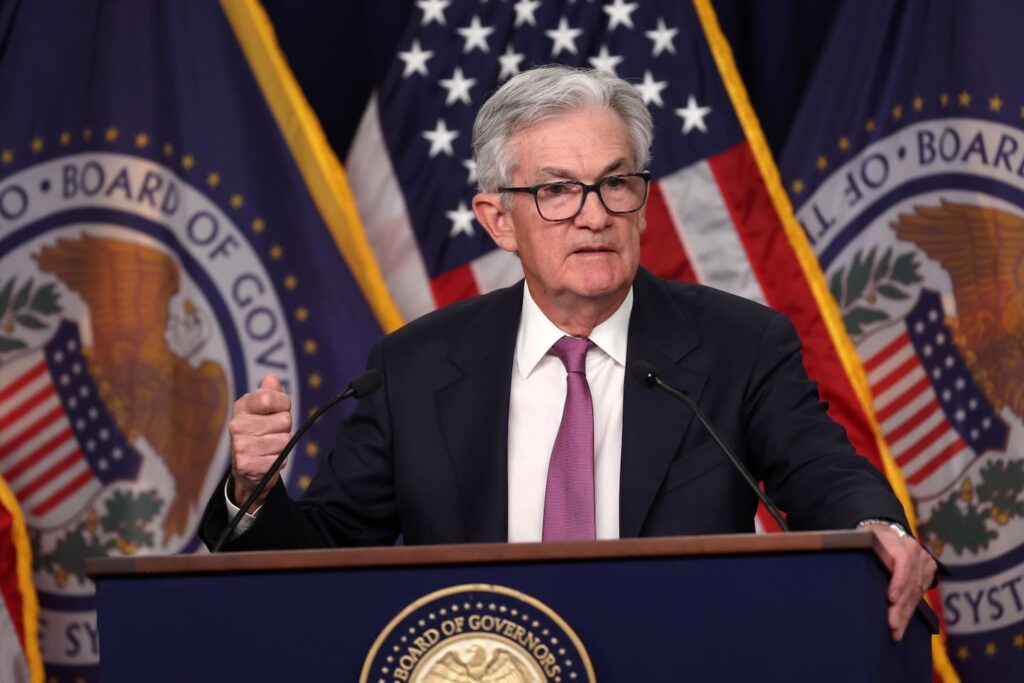
The committee anticipates that ongoing increases in the target range will be appropriate in order to attain a stance of monetary policy that is sufficiently restrictive to return inflation to 2% over time.
Two things stand out. The first is that it just repeats the language policymakers used in previous statements when they were lifting rates by greater amounts to combat raging inflation. Some market participants had expected the Fed to replace “ongoing increases” with softer language such as “some increases.”
The reason a change was expected is because inflation is decelerating and the manufacturing sector is in recession. The Institute for Supply Management said Wednesday that its gauge of factory activity signaled that output is the weakest since 2009 (excluding the early days of the pandemic) and that 15 of 18 industries experienced a decline in business.
The second is that interest rates are finally at a level that can be considered restrictive, or restraining and not promoting economic activity. At 4.75%, the upper end of the central bank’s target for the federal funds rate exceeds the Fed’s preferred measure of inflation, which is the core personal consumption expenditures price index. That figure came in last week at an annualized 3.9% percent in the fourth quarter, according to the Commerce Department. Excluding the early days of the pandemic, it’s the first time that rates can be considered to be restrictive since 2019, when everyone was expecting an imminent recession.
This is why the swaps market is pricing in a peak policy rate of 5% rather than the 5.25% or higher that the Fed has signaled. The market believes that rates are essentially where they need to be to accomplish the Fed’s main goal, which is to get the inflation rate down to a level of around 2%. Indeed, the derivatives market is pricing in an inflation rate of around 2.25% for each of the next two years.
Policymakers may believe that, too, but they have a different agenda. They will continue to send a hawkish message to keep markets second-guessing themselves. After all, an unpredictable Fed will keep markets on the defensive, which is appealing to the central bank as it looks to keep financial conditions from becoming too loose and putting upward pressure on inflation. Here’s Fed Chair Jerome Powell in his press conference after raising rates:
“It’s important that overall financial conditions reflect” the Fed’s actions. “Our focus is not on short-term moves, but on sustained changes” to financial conditions, adding that “a couple” more rate increases may be needed.
Still, the market cheered, with the S&P 500 Index going from down as much as 0.97% to up as much as 1.77% and bonds rallying. Markets know that the Fed is probably just going through the motions now, saying that its job is far from done. This may not be the pivot investors have waited for, but it’s certainly a pirouette. More From Bloomberg Opinion:
• Is the US Economy in Danger of Reheating?: Tyler Cowen
• Fed Might Need a New Excuse to Stay Hawkish: Jonathan Levin
• What Recession? Manufacturers Plan to Spend: Brooke Sutherland
This column does not necessarily reflect the opinion of the editorial board or Bloomberg LP and its owners.
Robert Burgess is the executive editor of Bloomberg Opinion. Previously, he was the global executive editor in charge of financial markets for Bloomberg News.
More stories like this are available on bloomberg.com/opinion

